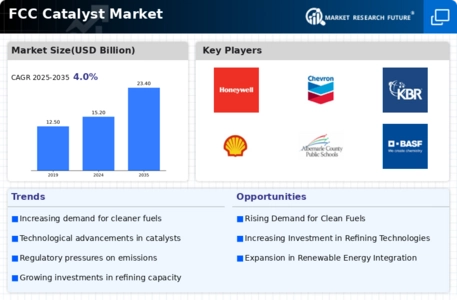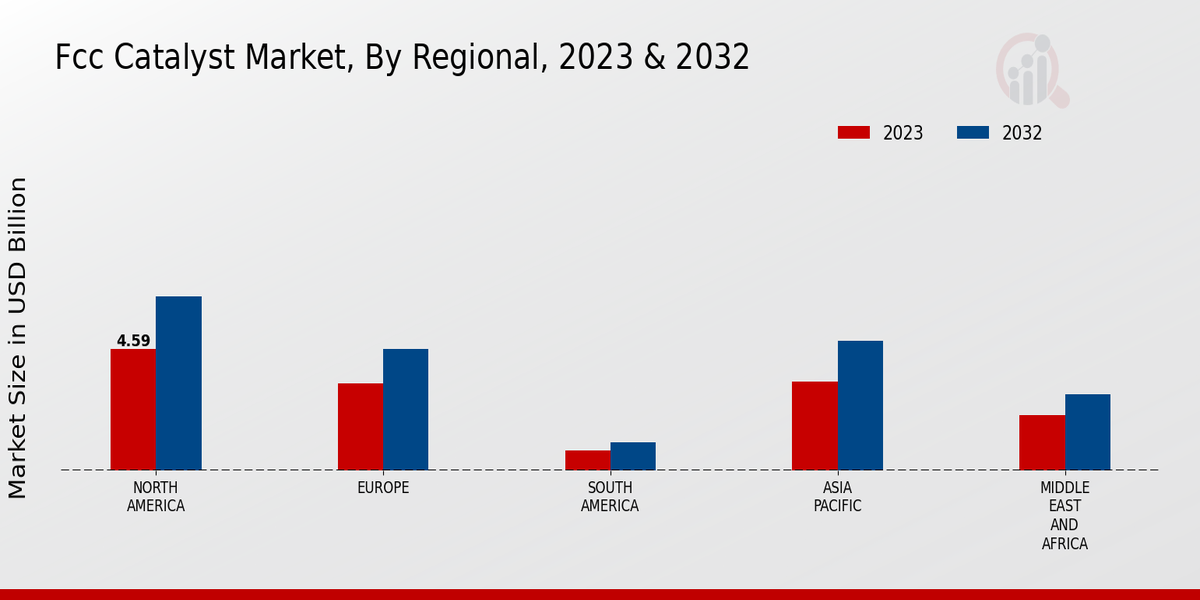Increasing Refinery Capacity
The Global FCC Catalyst Market Industry is significantly influenced by the expansion of refinery capacities worldwide. As emerging economies ramp up their refining capabilities to meet growing energy demands, the need for efficient FCC catalysts becomes paramount. This expansion is particularly evident in regions such as Asia-Pacific and the Middle East, where investments in new refinery projects are on the rise. The increasing capacity not only supports the production of cleaner fuels but also enhances the overall market landscape, contributing to a projected compound annual growth rate of 4.01% from 2025 to 2035.
Market Trends and Projections
Rising Demand for Cleaner Fuels
The Global FCC Catalyst Market Industry experiences a notable surge in demand for cleaner fuels, driven by stringent environmental regulations and a global shift towards sustainable energy solutions. As countries implement policies aimed at reducing carbon emissions, refiners are increasingly adopting FCC catalysts to enhance the yield of cleaner gasoline and diesel. This trend is expected to contribute to the market's growth, with projections indicating a market value of 15.2 USD Billion in 2024, reflecting the industry's adaptation to evolving regulatory frameworks and consumer preferences for environmentally friendly fuels.
Shift Towards Petrochemical Production
A strategic shift towards petrochemical production is reshaping the Global FCC Catalyst Market Industry. Refiners are increasingly utilizing FCC processes to convert crude oil into valuable petrochemical feedstocks, driven by the growing demand for plastics and other petrochemical products. This transition not only diversifies refinery outputs but also aligns with market trends favoring high-value products over traditional fuels. As a result, the demand for specialized FCC catalysts tailored for petrochemical applications is expected to rise, further bolstering the market's growth trajectory and enhancing its overall economic viability.
Technological Advancements in Catalysis
Technological innovations play a pivotal role in shaping the Global FCC Catalyst Market Industry. Advances in catalyst formulations and manufacturing processes enhance the efficiency and effectiveness of FCC catalysts, leading to improved performance in refining operations. For instance, the development of novel zeolite-based catalysts has been shown to increase the selectivity of desired products while minimizing by-products. These advancements not only optimize refinery operations but also align with the industry's goals of maximizing output and reducing operational costs, thereby driving market growth and positioning the industry for a projected value of 23.4 USD Billion by 2035.
Global Economic Recovery and Energy Demand
The Global FCC Catalyst Market Industry is poised for growth as global economic recovery fuels energy demand. As economies rebound, the need for refined products is anticipated to increase, prompting refiners to optimize their processes through the use of advanced FCC catalysts. This recovery is particularly pronounced in regions with significant industrial activity, where the demand for fuels and petrochemicals is on the rise. Consequently, the market is likely to benefit from this resurgence, with projections indicating a robust growth trajectory that aligns with the overall recovery of the global economy.






















